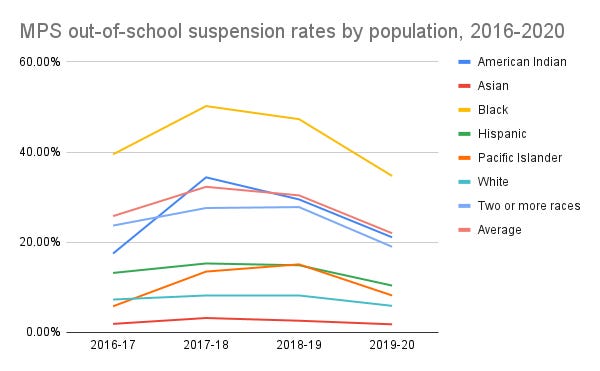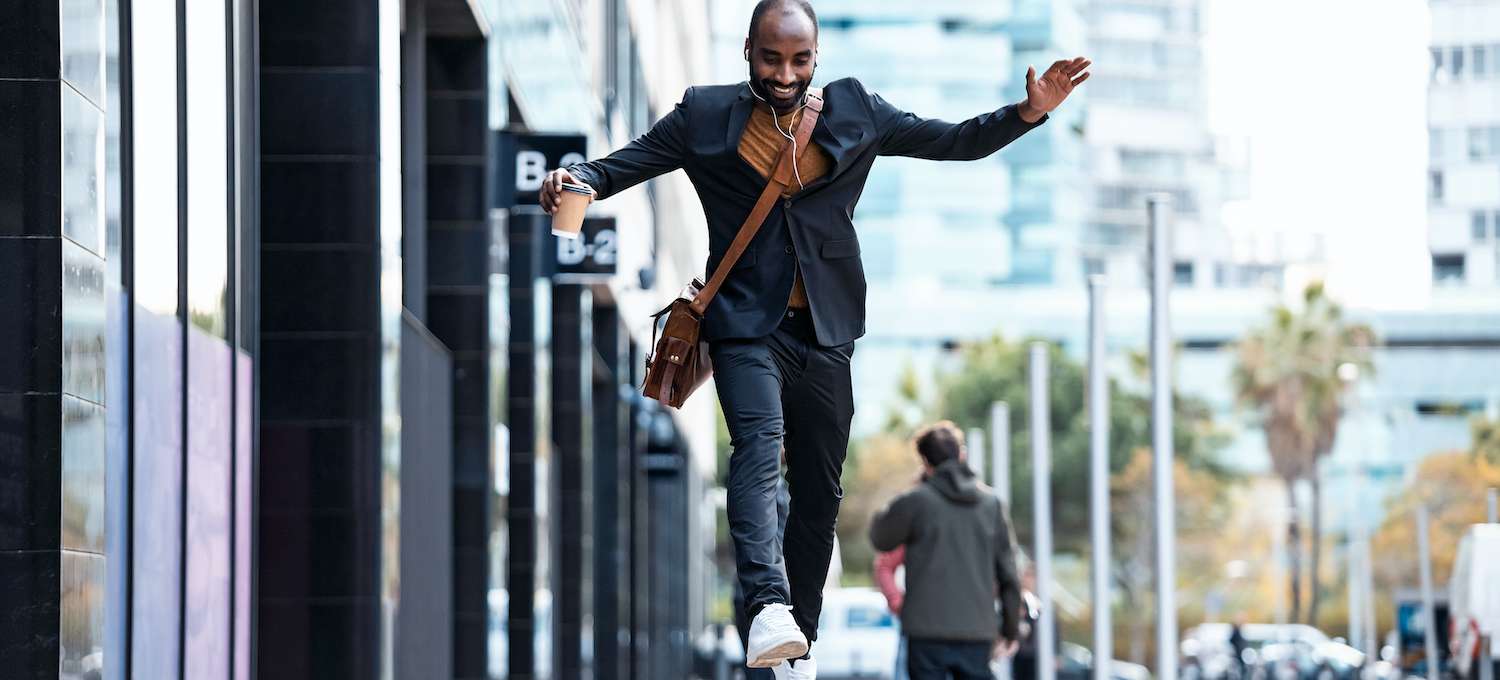It’s been a decade since Milwaukee Public Schools was flagged for over-suspending and expelling Black students, launching a two-year federal investigation that uncovered instances where white students were getting leniency for similar behavior.
As this school year comes to a close, the district’s disparities have not improved.
Black students, comprising about half the MPS population, have received about 81% of suspensions and 79% of expulsions this school year, according to district reports shared with school board members May 10 and 17.
While the district has formed a citywide committee to consider updates to the district’s code of conduct, aiming to remove some of the subjectivity that leaves room for bias, many students and staff have said the scope of that work has been too limited.
Students and organizers with Leaders Igniting Transformation are calling on MPS leaders to address the issue more comprehensively and move more funding in the proposed annual budget from security issues into mental health programs.
“This is an opportunity for our district to divest from policing our Black and brown students and funneling them into the school-to-prison pipeline, and invest in these students’ mental health and overall success,” said Jasmine Roberson, a staff organizer with LIT.
Numbers barely budge
MPS became the subject of investigation after the U.S. Department of Education reviewed the district’s data from the 2011-12 school year: Black students made up about 56% of enrollment, 83% of suspensions and 85% of expulsions.
The department’s Office for Civil Rights (OCR) launched a multiyear probe, examining data and conducting interviews about discipline patterns from 2013 through 2015.
In December 2017, when the civil rights office was still finishing its report, then-MPS Superintendent Darienne Driver signed an agreement to settle the investigation.
Among the commitments: MPS would equip its staff with better ways to address student behavior and it would form committees of students, parents and staff to advise the district on changing discipline practices with the end goal of more equitable results.
At the time, Driver said she was confident MPS would reduce disparities in discipline: “We have to,” she said. “It’s not optional.”
The federal civil rights office still published its findings, which were damning: investigators had found more than 100 incidents where Black students were expelled while “similarly-situated” white students were suspended for “similar misconduct.” The disparities were especially severe for types of violations that were more subjective, such as chronic disruption or disorderly conduct.
By the end of the 2019-20 school year, the disparities persisted. The district surveyed school leaders about the problem and many said the district needed to address bias with more precision.
Disparities were coming from “preconceived notions and stereotypes about people of color, young and old, and the systematic racism that is perpetuated and tolerated on a daily basis,” wrote Yalonda Graham, an MPS principal. “The district needs to drill down, and begin to examine where the issues lie, and start calling people on the carpet.”
School board members agreed they needed to see more specific data on a regular basis. In the summer of 2020, they directed administrators to provide monthly reports of suspensions and expulsions by race, broken down for each school.
Since then, the district has shared public monthly reports, but they haven’t been broken down by school, despite repeated requests from community members.
“That’s the only way to fix a problem — by dialing into where it’s happening so you can address it where it’s happening,” said Angela Harris, an MPS teacher and chair of the Black Educators Caucus. “If we aren’t addressing the places where it’s happening the most and providing that school with the resources and supports they need to move away from that, then we are not ever going to address discipline disproportionality.”
According to district reports, disparities for Black students so far this school year are in line with previous years, with Black students receiving about 15,497 of the 19,145 total suspensions from August through April.
With a Black student population of about 34,740 students, the suspension rate is about 45%. The rate represents the total number of suspensions, rather than the number of students suspended, so students with multiple suspensions increase the rate.
The suspension rate is even higher for students identified as American Indian. A smaller population with about 300 total students, they have received 208 suspensions, a rate of about 68%.
The rate is about 13% for Hispanic students, 7% for white students and 4% for Asian students, according to a tally of district data presented over the course of this school year.

Students, staff call for better data, mental health support
One thing administrators have tried is convening a citywide discipline committee this school year to examine changes to the student code of conduct.
After running a series of focus groups from November through January, MPS convened the citywide committee with representatives from each focus group. While MPS reported dozens of students participated in the focus groups, only two were on the 46-person citywide committee.
Harris was also on that committee. She said while the district did bring important groups of people to the table, the scope of the conversation was too limited to parts of the code of conduct and didn’t involve enough students.
Board members agreed there should be larger conversations that involve more students. At a meeting April 21, they rejected the narrow proposed changes from the committee, asking administrators instead to bring back more information about feedback from students and others.
“For me, that’s a missed opportunity to really engage students and have this really be a student-led conversation,” board member Marcela Garcia said.
Students with Leaders Igniting Transformation are also pushing for changes in the proposed budget for the next school year that would invest more in supportive services they say could help reduce suspensions and expulsions.
More:MPS budget plan predicts losing another 1,000 students, adding art and music programs
Specifically, LIT has called for removing $4 million from the security budget and investing an additional $1.5 million in the Black and Latino Male Achievement program, $1.5 million in Violence-Free Zones and $1 million in the district’s Department of Equity, Access and Inclusion.
Students speaking at a budget hearing May 17 said many of the district’s current security measures, including security guards and metal detectors, make students feel less safe and welcome in their schools. Students talked about being searched in the mornings, then forced to turn in cellphones.
“When we get there, we are stopped in a long line and getting yelled at when we get to the metal detectors,” sophomore Nash Stallings said. “It often makes mornings worse and more hostile. This makes all of the students not feel safe or feel they have privacy.”
Students said it’s often hard to find a counselor or other mental health professional to talk to at their schools and said better availability of supportive staff could prevent fights and other behavior issues.
“MPS students deserve better mental health resources and facilities at MPS,” said MPS student Samuel Beaver.
Contact Rory Linnane at [email protected]. Follow her on Twitter at @RoryLinnane.







